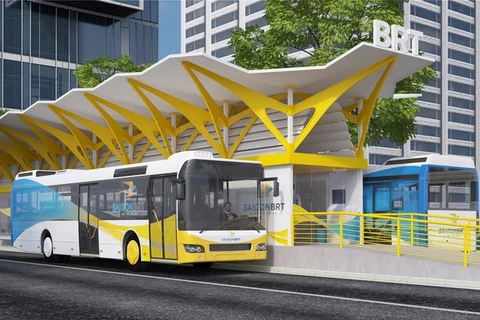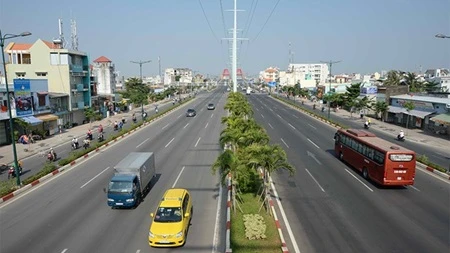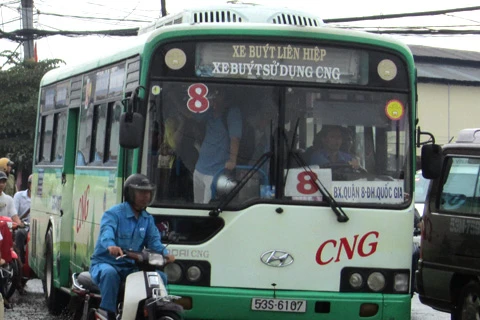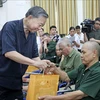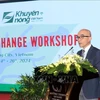 A compressed natural gas (CNG) bus is put into operation on the Ben Thanh-Cho Lon route in HCM City (Photo: VNA)
A compressed natural gas (CNG) bus is put into operation on the Ben Thanh-Cho Lon route in HCM City (Photo: VNA) HCM City (VNA) - Officials from the transport sectors of southern provinces urged the Government to issue special policies to encourage the use of compressed natural gas (CNG) in public transportation.
Tran Van Quan, Deputy Director of the Department of Transport of Dong Nai province, said the scheme of purchasing 550 CNG buses for the province had been submitted to the provincial government twice.
However, the central government has not issued a policy to help enterprises develop the CNG transport industry. The Government had said that CNG was not a new technology that was to be given top priority, he said.
The province has been working with Bình Dương province and HCM City to present its views to the Government.
The Government does not see the long-term environmental benefits of reducing import taxes to develop a CNG automobile industry, Quan said, adding that the Government should offer incentive loans as part of the policy.
“The Government should be more aware of improving the environment,” Quan said, adding that the province had 24 bus routes and only five of them were subsidised, with 30 billion VND (1.3 million USD) annually.
The province has many bus stations and bus stands, while the demand for buses is huge.
The provincial People’s Committee has invested in 100 buses a year in recent years, and the Dong Nai leaders are aware of the benefits of using CNG in public transport.
HCM City leads southern provinces in applying CNG in transportation with satisfactory results it began a pilot bus programme.
In 2011, the HCM City government approved Sai Gon Bus to buy 21 buses using CNG for the city’s bus route No 1 Ben Thanh – Binh Tay.
A recent survey on three CNG buses of the route by the HCM City University of Transport has given positive results.
On average, each bus consumes 39.56kg CNG for every 100kilometre.
After one year, the CNG bus saved more than 2 billion VND in fuel, a reduction of 23 per cent of fuel costs compared with diesel engines.
Buses using CNG cut at least 20 percent CO2 emissions compared to those using diesel oil.
Following the success, in 2013, the city government approved the plan to produce 300 CNG buses and assigned the SAMCO Corporation to conduct the project.
The project aims to gradually replace degraded buses in the city.
In early March, the corporation transferred the first 23 CNG buses of the 300 buses to the 19/5 Transport Cooperative.
In 2015, the corporation also supplied some CNG buses operating on the Thu Dau Mot City and Binh Duong New City.
Besides concerns about the need for a preferential policy from the Government to support CNG transport, a transport official in Tien Giang province expressed his concern about the number of CNG and CNG pump stations.
Tran Van Nghi, deputy director of PVGas South, said there were enough CNG pump stations for the bus system.
Excluding imported CNG, the gas resources in the country are immense for the development demand.
Off Vietnam’s shore, 962 billion cu.m gas has been found. The current exploitation capacity is over 10 billion cu.m a year.-VNA
